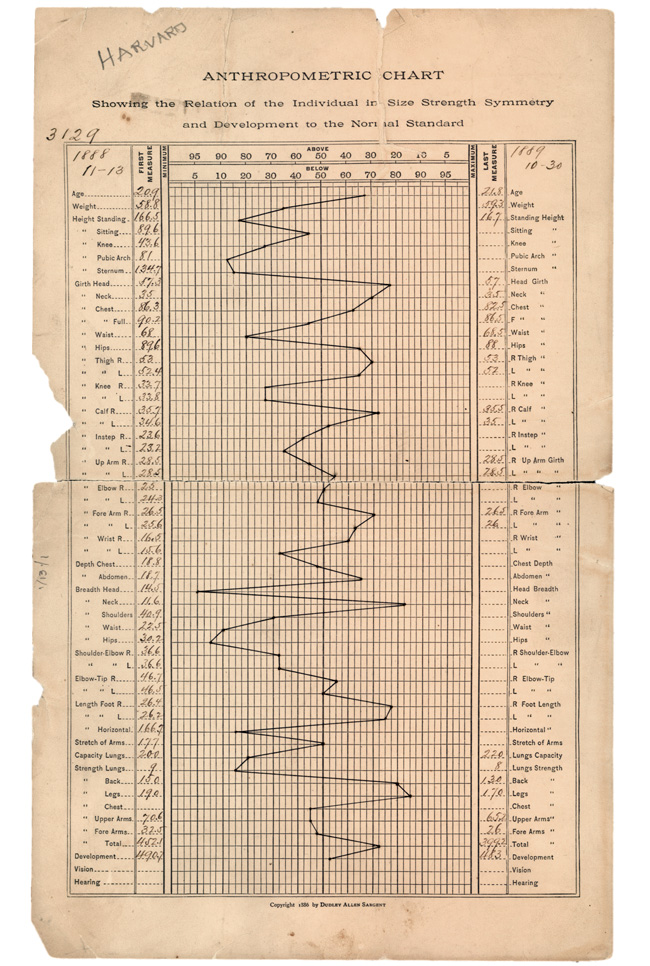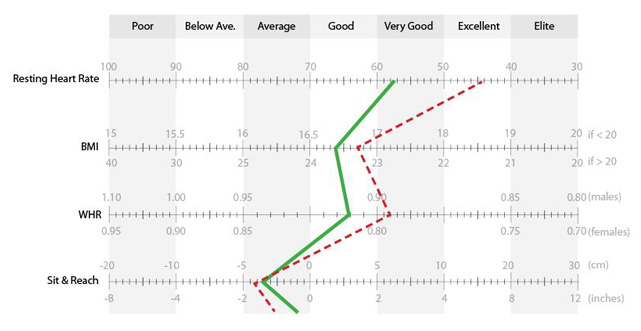Tests of anthropometry include measurements of body size, structure, and composition. It is useful to be able to assess these measures and monitor changes. Anthropometric charts are useful to have a visual representation of how the individual would stack up against the expected normal standard scores, and to clearly show how these measures have changed over time. See also our growth charts to record height and weight over time.

Early Charts
A pioneer in the collection of anthropometric measurements and the use of charts to plot and analyze these measurements was Harvard University professor Dudley Sargent. Below is an example of a chart used by Sargent in 1888. On the left hand side of the chart is listed all the measurements that are taken, and on the right side the same list for recording a follow-up measurement at a later date. In the middle of the chart is where the measurement values are recorded as a percentile, compar4ed to the population group being compared to.
The perpendicular line in the centre of the chart represents the average of the people examined. As a rule, all the measurements of a small person fall to the left, and all the measurement of a large person fall to the right of the normal line. For example, a strong person will have the muscle strength measures on the right side of the chart. Symmetry will be determined by the degree to which the drawn line approaches the perpendicular.

Home Fitness Test
Another anthropometric chart example is used on the Home Fitness Test. Anthropometry and other test results are compared to normative tables, and plotted on a unique rating scale, so you can clearly see where your strengths and weaknesses lie. Instead of using percentile scores, the actual test results are listed in the scale, ranging from poor to elite scores.
Related Pages
- A discussion about Body Size Testing
- anthropometric measurement in sports
- growth charts to record height and weight over time
- Height Prediction Calculations
- Measuring peak height velocity
- height / weight tables
- Changes In Athlete Body Size Over Time
- Records for the extremes of height and weight
- About Anthropometry for Sports
- ISAK accreditation
- Videos of Anthropometric Tests
- Download the Home Fitness Test
- Other anthropometric tests


 Current Events
Current Events